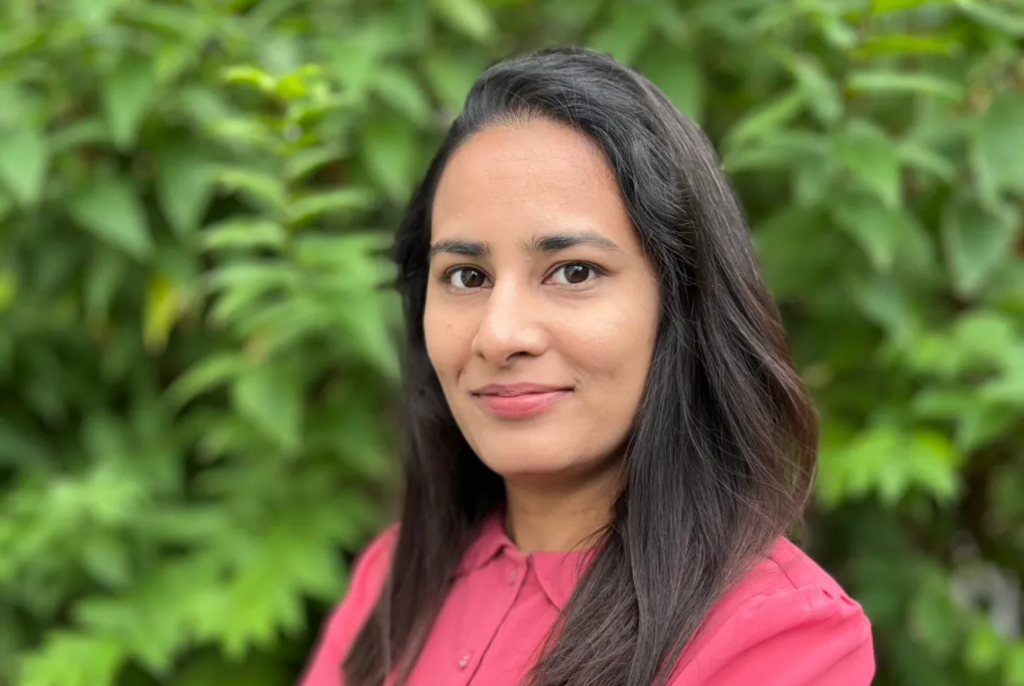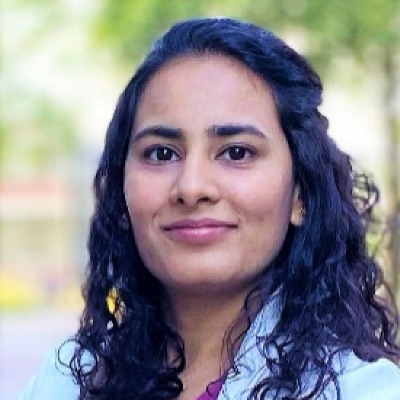
(hier klicken für deutsche Sprachversion)
Professor Shikha Dhiman (*1993 in Delhi) leads a research group at Johannes Gutenberg University Mainz, and is a rising voice in supramolecular chemistry at the interface of biology. In this interview, she shares how the elegance of molecular self-assembly and the quest to emulate life-like behavior drive her scientific passion. From exploring phase separation in synthetic materials to fostering inclusive research across cultures, Dhiman reflects on her journey from Delhi to Germany via the Netherlands, where she moved in 2015. She speaks about navigating scientific systems, cultural integration, and building a collaborative, curiosity-driven lab that aims to bridge molecules and life itself.
Your research focuses on supramolecular chemistry at the interface with biological systems. What inspires you most about this field?
What draws me to supramolecular chemistry is its elegance – how complex behavior can emerge from relatively simple molecular interactions. Working at the interface with biology adds a layer of purpose: we are not just building beautiful assemblies; we are trying to emulate or even influence life-like behavior.
… and what are some current questions you are exploring in your lab?
Currently, my lab focuses on how liquid–liquid phase separation contributes to the organization of biomolecular systems. We are exploring how to mimic such compartmentalization in synthetic materials – for applications like artificial cells, controlled drug release, or stimuli-responsive therapeutics. For instance, we are designing materials that release drugs only when triggered by disease-specific signals.
The beauty of this field is that it constantly surprises us – and that surprise is what keeps me excited as a scientist. At the core, I see myself as a builder: of molecules, of ideas, and of communities.
Your academic path – from Delhi to Bangalore, and then to Europe – has taken you across countries and cultures. What were the key turning points in this journey, and how did they shape your scientific identity?
The first turning point was joining JNCASR in Bangalore for my PhD. It was there that I discovered supramolecular chemistry and was trained to think rigorously and independently under outstanding mentorship.
The second major shift came during my postdoctoral work at TU Eindhoven. That experience broadened my perspective on science – on how interdisciplinary and collaborative it could be. The open research culture encouraged me to pursue new directions, such as linking phase separation to materials design, and it led to some of my first independent collaborations. Those years helped me find my scientific voice.
Relocating from India to Germany via the Netherlands must have brought both challenges and opportunities. What did you find most difficult – and most rewarding – about transitioning into European academic life?
In India, research labs often feel like close-knit families. In Europe, there is a strong emphasis on independence from day one – which is empowering but can feel lonely at first. You arrive without a familiar support network, and the language barrier adds to the challenge. But that independence also became the most rewarding part.
Why?
I was given the space to explore ideas, make mistakes, and grow into a more confident and grounded researcher. The exposure to international collaborations was transformative. I developed a more strategic, globally collaborative research style that continues to shape the direction of my lab today.
Language and integration are often central to settling in a new country. What role did language play in your journey, and how did you navigate the social and cultural aspects of integration in Germany?
Indeed, language has been both a bridge and a barrier. In scientific settings, English is the default, so research life was relatively smooth. But outside the lab, language plays a huge role in feeling truly connected to society.
Even in India, many labmates shared a common regional language. I noticed a similar pattern in the Netherlands and now in Germany – people naturally connect in their mother tongue. I am making a conscious effort to learn German – not fluently, but enough to manage daily life and appreciate the local culture.
Most of my friends are international, and I have found that integration is not just about language it is about being curious, respectful, and open to new norms. I still find German bureaucracy both exhausting and, at times, amusing. But I admire how seriously they value work-life balance – it is something I have come to really appreciate.
As the leader of an international research group, how do you foster an inclusive and collaborative environment across cultures and disciplines?
I believe science thrives when people feel safe, heard, and valued. In my group, we emphasize shared values – curiosity, integrity, and respect. I try to lead with empathy and openness, encouraging honest discussions and celebrating diverse perspectives.
Our research spans chemistry and biology, so interdisciplinary thinking is essential. Equally important is cultural openness – a willingness to learn from one another and embrace differences as strengths. The best collaborations, in my experience, happen when science is driven by genuine curiosity – not just career expectations.
True. You have worked in both Indian and German academic systems. How would you compare the two in terms of structure, expectations, and opportunities for young researchers?
Each system has its strengths. In India, students often have a strong theoretical foundation and deep motivation. In Germany, early-career researchers are given significant autonomy, and the infrastructure is excellent.
In some cases, I have found the approach in Germany can be more structured and career-oriented, whereas in India I often encountered a more passion-driven mindset. That said, India is evolving quickly, with more support for interdisciplinary and independent thinking.
What I would love to see is more structured exchange – where young researchers spend time in both systems. That kind of cross-pollination would enrich scientific thinking on both sides.
Looking ahead, how do you envision the future of supramolecular chemistry?
I see supramolecular chemistry playing a central role in areas like synthetic biology, soft robotics, and personalized medicine. We are moving from designing static structures to creating dynamic, adaptive systems that interact with their environments – much like living systems do.
What directions or breakthroughs do you hope to contribute to in the coming years?
My aim is to contribute by developing responsive, out-of-equilibrium materials that mimic biological compartmentalization and signaling. Ultimately, I hope our work helps bridge the gap between molecules and life. Developing truly artificial cells would be a transformative breakthrough – and I hope our work can help bring to life!
We are looking forward to your new findings.
Link: Dhiman Lab

